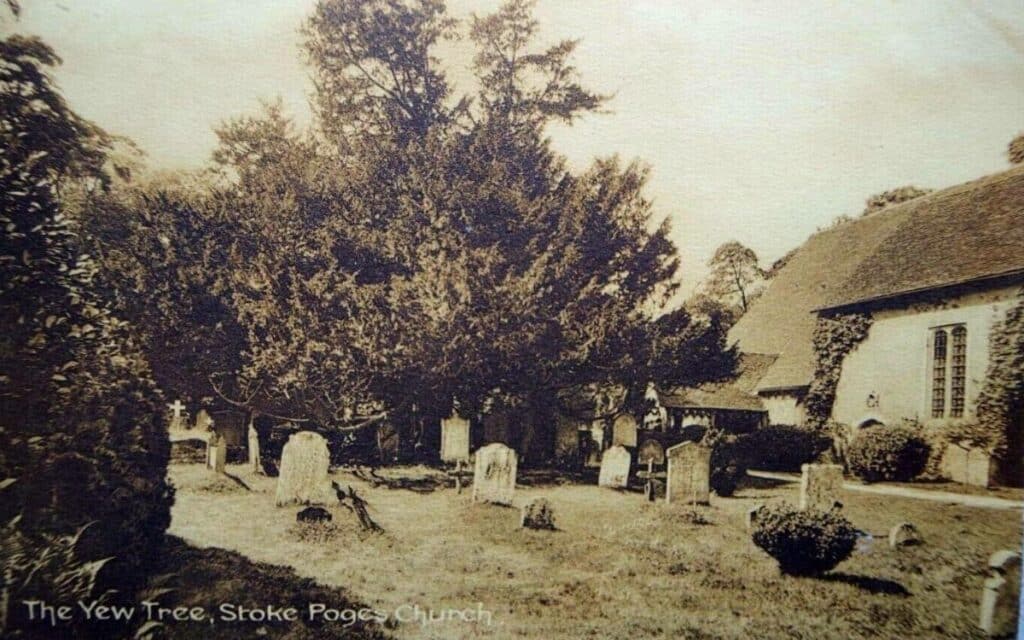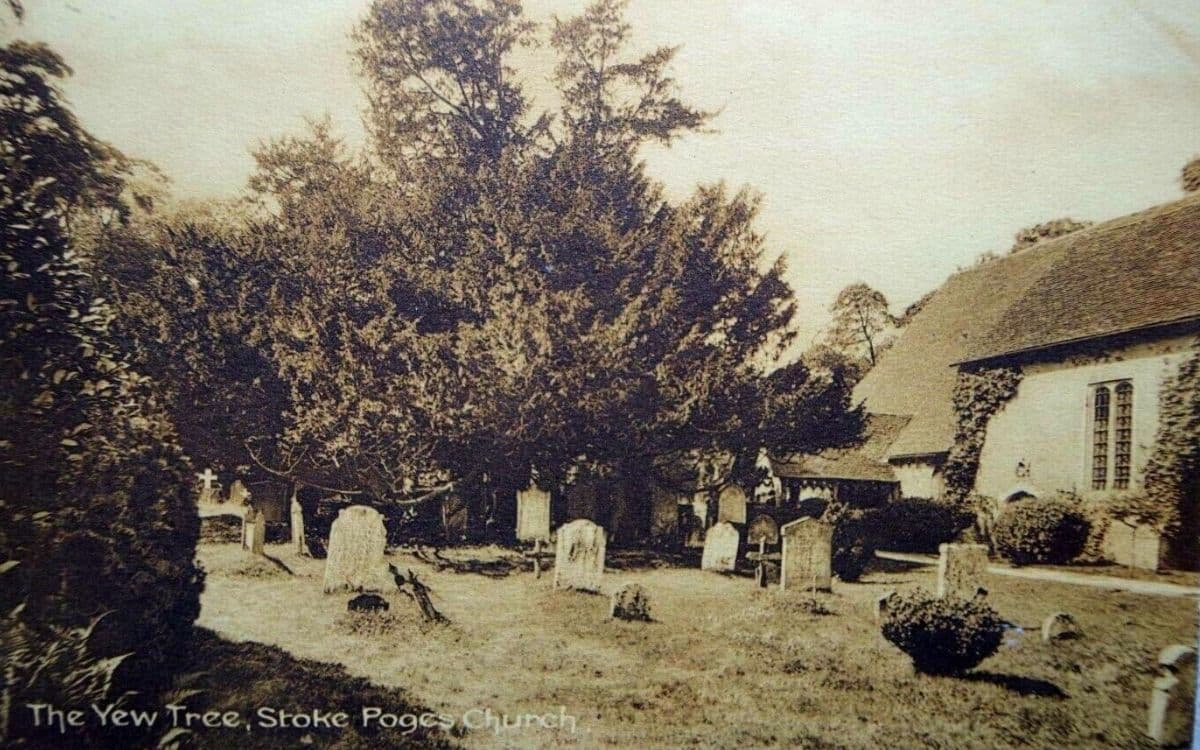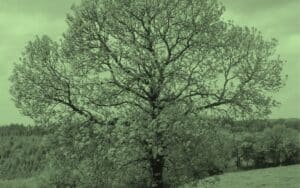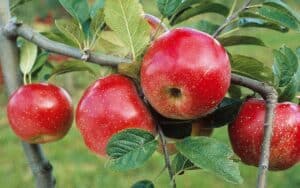Yew Trees are at the heart of dark folklore in the UK and Ireland. CALLUM CAMPBELL takes a look at this spooky tree.

Trees are around us everyday. So it’s no wonder that thousands of pieces of folklore surround these icons of nature and none more so than perhaps the ancient yew tree, a symbol of death and destruction, pain and torment but also regeneration and resurrection.
Facts about Yew Trees
- One of the oldest trees in all of Europe is the Fortingall Yew, a twisting oak that sprouts at the centre of Scotland. While not extremely impressive in terms of height, its girth is a sight to be marvelled at as it is composed of multiple trunks which spiral and weave amongst each other creating a particularly wide trunk. What is even more impressive is that it once had a girth of 16 metres in 1769, however, due to decay this figure was reduced. This tree is stated to be at least 1500 years old with most scientific estimates at 2000 to 3000 years however so claims suggest the tree dates back to 9000 years old. The tree is also said to be where Pointus Pilate was born, a man who would later condemn Jesus Christ to death.
- Yew is considered to be the tree that best embodies death perhaps because its leaves excrete poison. This unfortunate and likely deserved reputation could have given root to many superstitions such as the idea that if one brings yew branches in along with Christmas decor, it will lead to a death in the home.
- Some other legends associated with this sickly tree involve Romans using the yew tree for their funeral pyres and the Egyptians using it as a symbol of mourning. Through the ages it seems this tree has acquired a jaded reputation.
- Perhaps we are being too harsh on this tree as with most things in folklore it possesses a lighter side. While we humans only suffer negative effects if we ingest any toxin from this tree, all manner of ghosts and wraith are said to flee from this tree and its wood. The druids of Celtic Britain were said to plant yew trees over their graves so that the tree may absorb any trapped spirit so that they may not bother the living.
- Yew trees, along with death, are connected to regeneration as the manner they grow in is rather intriguing. The branches of the tree extend downwards and eventually produce a new trunk where they meet the ground which in turn produces more branches so that the cycle may continue. By growing in this manner a single yew tree may continue to live even though the original trunk died to disease or was chopped for wood. Therefore they are the perfect icon of regeneration, regrowth and rebirth.
- One may believe it would tempt fate to keep a tree connected so closely with death at your door. However it is ingrained into folklore that yew near your home will prevent it from being damaged or destroyed. This goes two ways, however, should you chop a yew tree down a curse of bad fortune will be placed upon you. So differing cultures expand on the belief that yew protects the home, with the Hebridies stating yew wards off fire and the Egyptians reporting that no house with a yew tree will be smited by lighting.
- Yew features in an ancient Irish legend which states that the court of the High King, located at Tara, was visited by a stranger of prodigious height. This stranger introduced himself as Trefuilngid Tre-eocahir and collected seven of the wisest men from each quarter of Ireland and seven from Tara. To these individuals, he taught the heritage of the land and recited all he knew to them. Afterwards he gifted some seeds to Ireland and they were planted at each corner and the centre of the land, maturing into trees with great boughs and healthy leaves. These five trees came to be known as the five Sacred Trees of Ireland, three ashes, a yew and an oak or two yews. These trees were figureheads of the clans that owned the land their roots spiralled into and granted great power to the chiefs. Unfortunately, the trees fell around 665 AD and Ireland lost these marvels of nature.
- Situated at Nevern, Pembrokeshire, is a gnarled old yew tree inconspicuously standing in a grove of yews in Nevern’s churchyard. There would be nothing special about this tree if not for the fact it has continuously been leaking blood red sap for 700 years! It is a common occurrence for trees to drip sap when injured, however, the flow dries up quickly and certainly does not sustain itself for over half a millennium. There are many explanations for this eerie phenomenon such as the tree bleeds in sympathy for Christ’s death on the cross or it bleeds due to an innocent being hung on it long ago. Some say it will stop bleeding when the world is at peace. Whatever the explanation, it has been confusing people for centuries and is a celebrated part of Nevern’s history.
- Perhaps a scientific explanation can be given for all the mystery and wonder surrounding yew trees. Recent discovery has shown that yew trees secrete a gas called taxine on hot days. This gas produces hallucinatory effects when inhaled, leading to a possible reason for the magic that has surrounded yew trees for centuries.
- Yew wood has been carved for use in making wands by magical practitioners for aeons. Many state that yew produces instruments that can cast powerful spells of longevity and necromancy, due to the dual nature of this many-faced tree. While it is used by modern occultists, yew was also a preferred wood for druidic practitioners of Ogham, a runic method of wand which involved inscribing symbols of wooden staves.
I hope you enjoyed this informative article on the many natures and dualities of Yew, a tree that can kill and curse or heal and cure.
You can find out more about British tree folklore here.







All this and longbows too. actually I’m probably being a bit disengenous here since it was weel kent that british yew was no good for bows , so the English Longbow actually came from the alps – and other places.